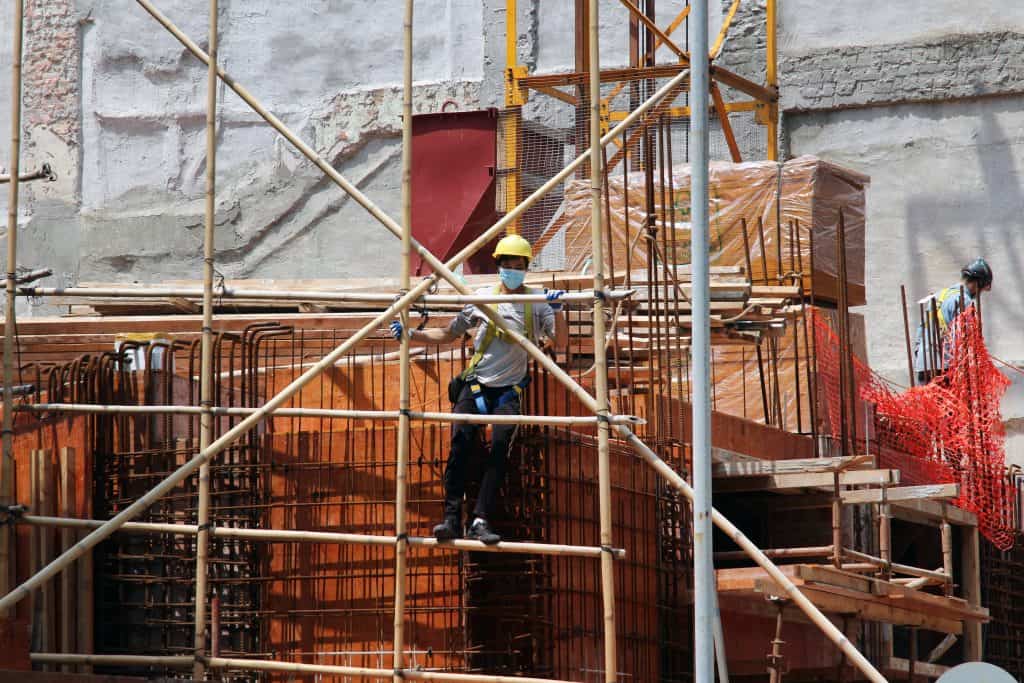June is National Safety Month and provides us with the perfect opportunity to offer some worksite tips to keep your team and business safe from injury. For this piece, we will discuss the “Focus Four,” as well as another topic we feel strongly about: Distractions.
Distractions
It’s easy to be distracted on a job site, and it’s an easy way to get injured. Falling equipment and/or debris, stepping on debris in a walkway, or walking in front of a piece of moving equipment is a quick way for your workers to suffer an injury. In addition, cell phones, texting, iPods, and other distractions can interfere with worker’s awareness and focus. Being aware of your surroundings, watching where you are walking, keeping paths clear, and staying alert will keep workers injury-free.
Trisco Tip: On Trisco job sites, workers are prohibited from listening to portable music players, headphones, and boomboxes. This keeps the job site professional and focused.
Falls
Falls are the leading cause of fatalities in construction, and “slips and trips” are one of the leading causes of injuries. Fall hazards are everywhere. Workers can easily lose their balance, a slide on a slippery surface, or a trip over a misplaced tool or piece of material. Any walking or working surface can be a potential fall hazard. Guardrails, back rails, safety nets, guards and covers for openings will all help to keep job sites hazard-free. Make sure all equipment, ropes, and cables are inspected daily. All swing stage scaffolding should be inspected regularly by trained competent workers as well.
Trisco Tip: Many of our projects require transitioning onto and off of roofs. We tell our men to take a moment to stop, look around, and make sure each other are safe. Though we strictly adhere to OSHA regulations, we believe in the “power of 2.” Another set of eyes can go a long way.
Caught-In or Between
OSHA defines “Caught-in or Between” injuries as those resulting from the worker being squeezed, caught, crushed, pinched, or compressed between objects. This could include getting caught in stationary objects, cave-ins, or being pinned by moving equipment such as a man lift. Occupational fatalities caused by caught-in or between hazards are serious concerns, however with proper safety measures in place you can safeguard your team.
Trisco Tip: Before any activity on a congested job site, it is extremely important to do a safety analysis and openly discuss the hazards of the job. As many times our men are in man-lifts positioned closely against buildings, it is important to keep the control areas clear of debris and shut off the engines when the lift basket is stationary.
Struck By
Injuries from the forcible impact of an object or building equipment pose major hazards to the safety of your team. Falling building materials and tools, swinging objects like a wrecking ball or crane hook or rolling objects all put your team at risk for injuries.
Trisco Tip: Our men work up above people and it is very important to keep track of tools and materials so they don’t fall. It is equally important to maintain a barricaded zone below the work area with clear signage indicating our presence up above.
Electrocution
Workplace safety directors are encouraged to remind their employees to BE SAFE and keep an eye out for hazards which pose a risk for Burns, Electrocution, Shock, Arc Flash/Arc Blast, Fire or Explosion.
Trisco Tip: Electrical cords are often subject to wear and tear and it is important to perform daily inspections of these. At the end of each day, our men coil cords up to store them in the trailer. At this time, a visual inspection for tears, rips, or missing ground plugs is performed.
To keep your team and worksites safe from hazards it is important to have a strong safety program in place. When developing your safety policy be sure to include proper applicant screening – covering drug and alcohol testing and pre-employment screenings. Third-party safety inspection teams, safety training programs, and job-specific safety plans are important to have in place as well. Proper equipment testing and training as well as operating licenses and certifications will help keep your team safe.
We believe that a positive and proactive attitude towards a culture of safety works better than punishment; and we will reward our employees for their commitment. After all, we should all leave work in the same condition as we arrived.

